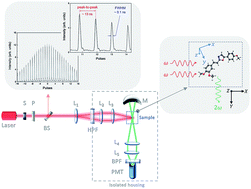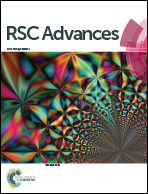First molecular electronic hyperpolarizability of series of π-conjugated oxazole dyes in solution: an experimental and theoretical study†
Abstract
In this work, we report the experimental and theoretical first molecular electronic hyperpolarizability (βHRS) of eleven π-conjugated oxazoles compounds in toluene medium. The Hyper-Rayleigh Scattering (HRS) technique allowed the determination of the experimental dynamic βHRS values, by exciting the compounds with a picosecond pulse trains from a Q-switched and mode-locked Nd:YAG laser tuned at 1064 nm. Theoretical predictions based on time-dependent density functional theory level using the Gaussian 09 program package were performed with three different functionals (B3LYP, CAM-B3LYP, and M06-2X), to calculate both static and dynamic theoretical βHRS values. Good accordance was found between the experimental and theoretical values, in particular for the CAM-B3LYP and M06-2X functionals.



 Please wait while we load your content...
Please wait while we load your content...